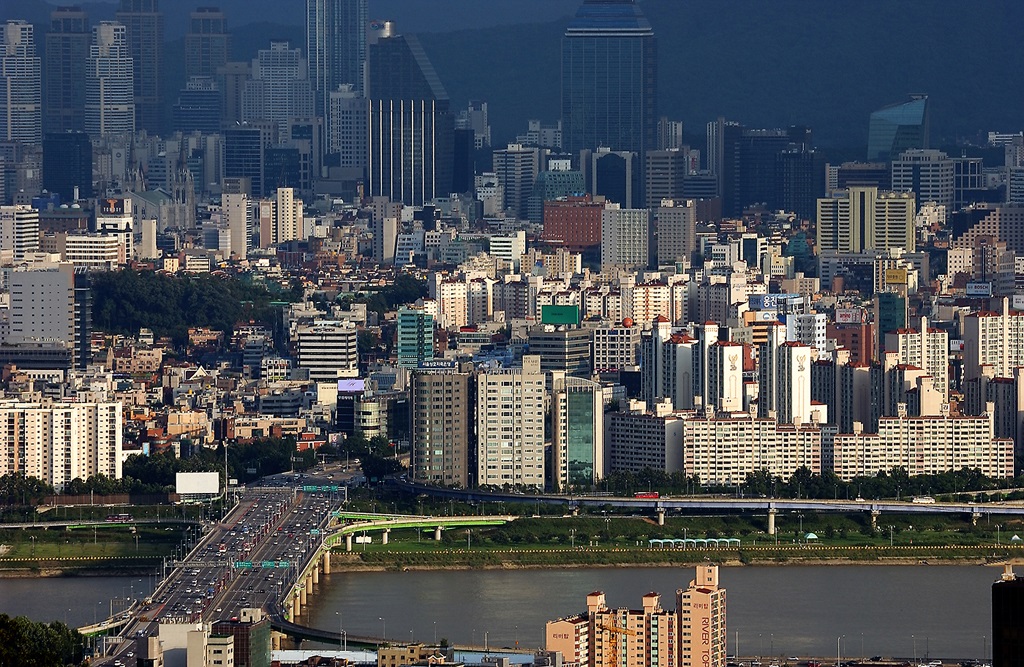The Peninsula
Traveling During a Global Pandemic: A First Hand Account
Published September 3, 2020
Category: South Korea

By Irene Park
It has been thirteen days since my family and I started a two-week mandatory quarantine placed on all overseas travelers entering Korea. What feels like almost a month ago, my husband, 3-month-old infant daughter and I boarded a noticeably empty Korean Air carrier from Dulles International Airport heading home. Normally, going to Korea would be an exciting chance to catch up with family and friends back at home but this time things would be very different.
Crew members and passengers wore face coverings and cautiously distanced themselves all while trying to appear cool and calm. Korean Air intentionally spread out passengers so no two strangers would be seated next to each other and passengers took caution by talking less and minimizing restroom breaks. Although it was comfortable and safe having lots of empty seats around us, the sight of stoic faces, half-covered with masks, was a reminder of the gravity of the global pandemic. Passengers were allowed to remove masks only at meal time and those brief moments were liberating because it felt as if things were normal.
At some point during the flight, flight attendants handed out three separate forms requiring information about our current health condition and place of residency during our stay in Seoul. Once we arrived to Korea, we went through temperature screening and had to fill out several more forms asking for the same information to submit to all agencies involved in monitoring our status and whereabouts. In addition, we were required to install a Coronavirus self-diagnosis application on our personal cell phones. Volunteer staff from the army reserve were there to guide us through the app and also double check our emergency contact numbers to confirm where to find us in case we went missing.
After passing through customs and baggage claim, our next task was to confirm transportation to my house. Unless a family member drives over to pick you up, all travelers have to book a government-issued taxi and drivers must be present at the arrival gate wearing an official tag approved by on-site Health Ministry staff.
The driver who took us home reminded us to visit the nearest community health center to get tested for COVID-19 within three days of arriving to Korea. The next day we went to a testing facility, which was a makeshift clinic in front of the community health center where staff in full hazmat gear were diligently conducting temperature checks and collecting nasal and throat swabs. Paper work and testing combined took about 15 minutes and we received the results the following day via text message that read “your test result is negative, however, please remain in self-isolation for the duration of your quarantine.” We were also told to revisit the health center within three days of completing the quarantine for a second round of testing.
During quarantine, we had to log our daily self-diagnosis – once in the morning at 10am and once in the evening at 8pm – through the app. Additionally, we were assigned to a local administrative staff whose duty was to call in everyday mid-afternoon to check for signs and symptoms of COVID-19 such as fever or chills, cough, sore throat, and shortness of breath. If we happened to skip a daily log, miss a daily check-up call, or leave the cell phone in one place for too long, a text message notification would prompt us to check in with the supervisor and report your current location.
In all honesty, self-isolation was the hardest part out of everything we had to go through. The flight, taxi service, self-diagnosis app, and testing were inconvenient, however, being in isolation was daunting. Not being able to leave the house and meet with people began to create a certain level of anxiety and uncertainty about what would happen once we were free to move around. Everyday my husband and I would read up on the local news about a possible second wave of infections in Korea and discuss what we should or should not do once the quarantine was over. Towards the end of the two-week period, we started to realize that for us life after quarantine would basically stay the same as life in quarantine, and that the “Corona blues” was a real thing.
Irene Park is Executive Assistant & Office Manager at the Korea Economic Institute of America. The views expressed here are the author’s alone.
Photo from Nam-ho Park’s photostream on flickr Creative Commons.
